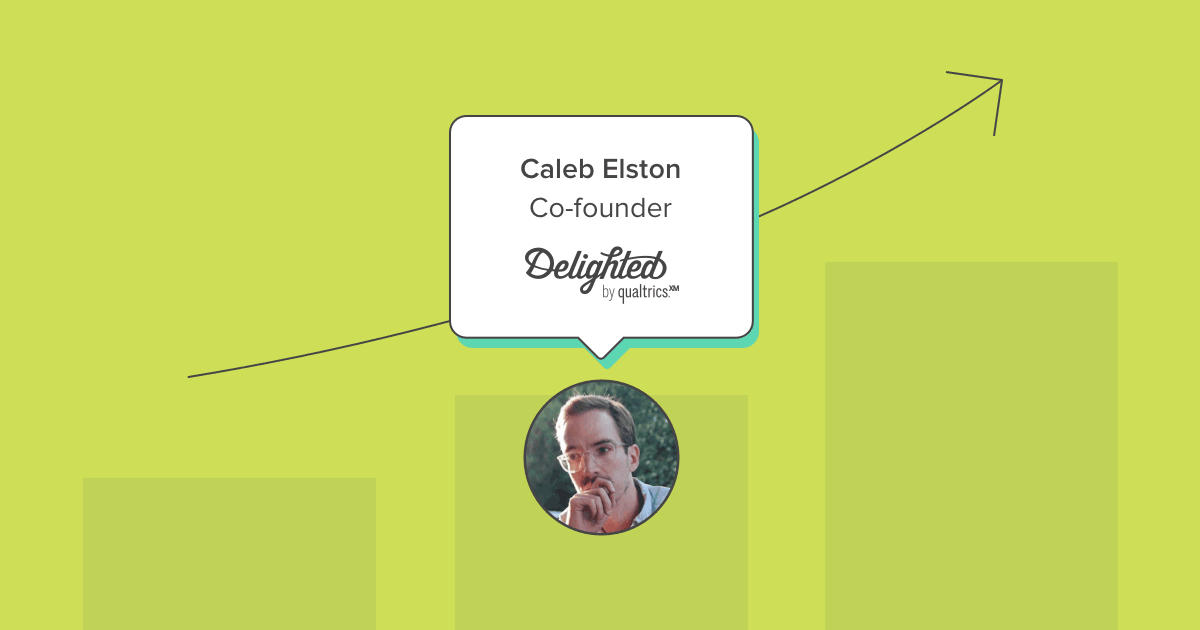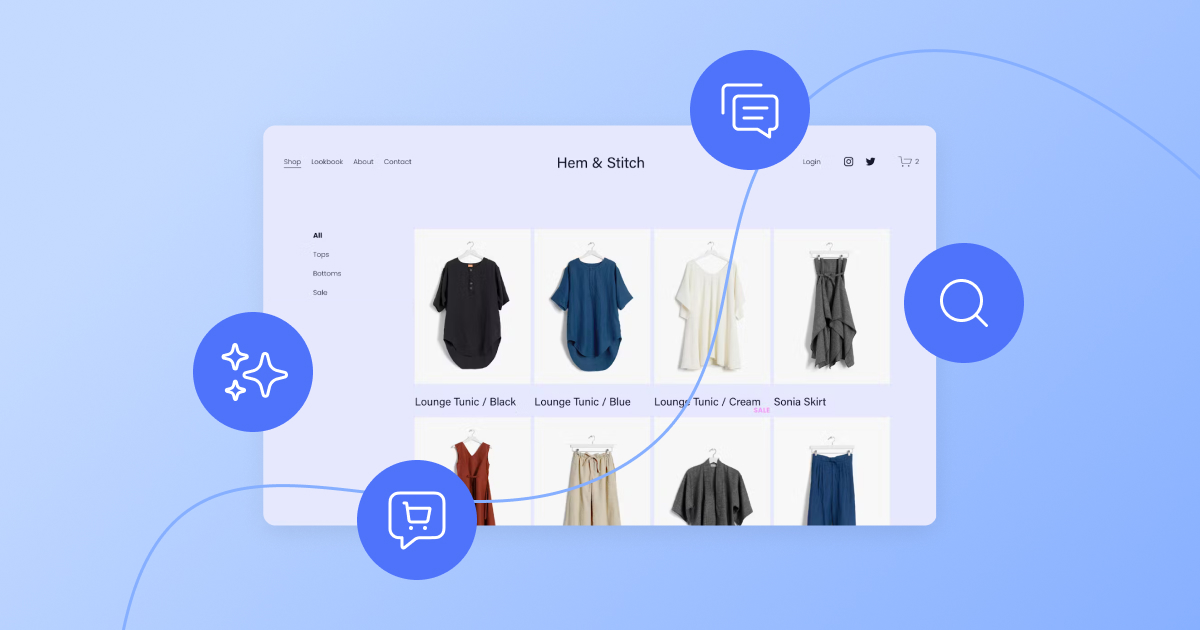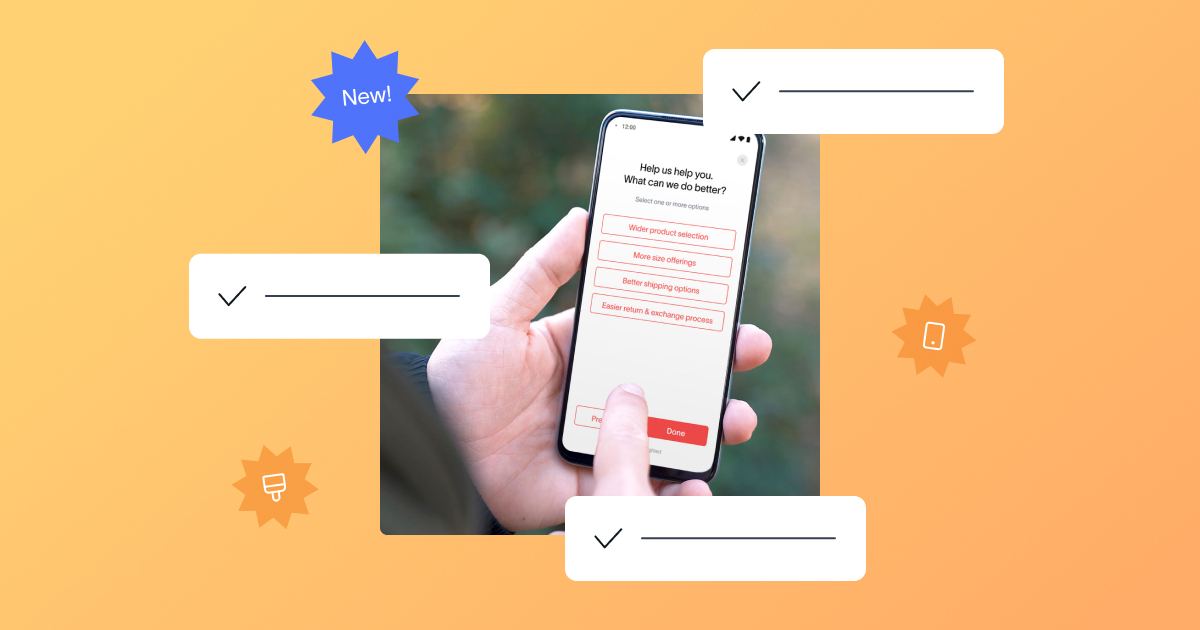Post contribution by Caleb Elston, Co-founder of Delighted.
In the early days of your company, you’ll have an important decision to make around how you will grow the business. You will have to ask yourself – will my business’s growth primarily come from selling to customers through a sales team or through paid advertising? Or, will my business’s growth come from building a product that is in its very nature designed to grow and attract customers (thus, reducing the need for sales teams and costly go-to-market engines)?
Many companies would love to have a product that grows on its own. However, it’s important to know that creating a self-growing product requires investment in other areas that you may have not yet considered – including design, engineering, analytics, customer understanding, and more. Even from the early days at Delighted, we focused on a product-led growth strategy that was designed with product and customer experience (CX) – and in turn, a growing, happy customer base – in mind.
Here are some of the lessons I’ve learned as a founder and my advice on 5 product-led growth best practices that you can use in your own business.
1. Deliver value to your customer
When we started Delighted, a big challenge in the customer experience space, (especially as a startup or small business) was that you’d have to chain together 6+ tools (a general survey tool, an email marketing platform, an analytics system, a CRM, etc.) to pull off a high-quality Net Promoter Score (NPS) program. Finding and implementing multiple tools to measure the customer experience was not only time-consuming, but also resulted in a sub-par user experience for customers and teams.
That’s when we had the insight to bring all the disparate parts of running a CX program into a single, easy-to-use product. Not only that, but we also saw the value-add for a product that was effortless to use and quick to implement for an entirely new audience of people running their very first CX program. With Delighted, you didn’t need to be an expert researcher or cobble together a bunch of different tools to pull off a basic program.
2. Map out your product and onboarding experiences
Once we solidified the product need, we plotted the key elements of our product’s experience – from creating your survey, to how you’d distribute it to customers, what analytics and dashboarding you’d need, etc. We also wanted to make sure that the customer feedback could be used across teams, so we decided on the critical product integrations we’d need such as Slack, Salesforce, and Shopify.
From there, our goal was to make the onboarding process as fast and painless as possible. We continually reviewed and refined our onboarding flow until we found a way for our customer to get their first piece of real feedback in very little time. Where other systems and methods would take days or weeks to get up and running, customers could start getting feedback with Delighted in minutes.
This newfound speed led folks to hear about our experience management software, sign up, and immediately start getting value from the product.
3. Focus on a self-serve solution first
Part of delivering value – fast – and allowing your product to grow on its own, is building it to be a self-serve solution from the very beginning. This means that customers can sign up for a trial on their own, they can easily use the product and start getting value without talking to a salesperson or an implementation team, they can pay for the product with a credit card, and they can upgrade their plan without assistance as their usage expands in-product.
When building out a self-serve solution, you will have to consider the following questions:
- How will customers bring their data into the product? If they will be uploading their data, what formats do we support?
- How do we message and help when customers experience errors? How will customers know what to do next to resolve their issue?
Answering these questions and more can help you simplify and be clear about what the ideal self-serve customer flow is and how your product is designed to be used. Solving the thorny issues around a self-serve solution early can also lead to a more streamlined and comprehensible product.
The alternative approach of using humans to solve customer issues can lead to a confusing product and a disgruntled customer. If you always fall back on someone in sales, implementation, or customer success to hold customers’ hands and fill in gaps and cracks in the product, growth and scalability can be stunted.
When the customer is fully on their own throughout the entire customer lifecycle and the product can stand on its own, customers tend to build more trust with the product knowing they can accomplish what they need.
4. Understand the importance of product metrics
When your product is your primary growth channel and it’s a self-serve solution, you’ll need to instrument your platform with analytics to understand how key conversion funnels are performing in-product. With an inside look into how your product is doing, you can better understand key feature usage and know what’s driving customers to pay, upgrade, and refer others to the solution.
Measuring and paying attention to primary conversion funnels first, with a particular focus on your onboarding funnel, is key. If no one is making it through the initial onboarding flow and getting value from your product quickly, measuring clicks around your product won’t be very helpful.
Having both your onboarding funnel and your product instrumented with essential product metrics is a good place to start measuring the user experience.
From there, you can use the data collected to continually refine your onboarding experience, help customers be more successful in their first run of your product, and eventually drive a higher percentage of people actively using the product.
5. Never underestimate the significance of product quality
People with a successful product-led growth strategy will understand that the reason why customers choose their company is because their product delivers more value than alternatives. It’s that simple.
Therefore, you must invest an immense amount of effort and time in the beginning stages to make your product as useful and high quality as possible for your early customers. The early customers are the ones who will be your advocates and champions to bring in the next wave of customers who will ultimately build your brand as a product-first company.
It’s important to remember – no amount of cold emailing, personal connections, or slick marketing ads can fix a product that doesn’t resonate with customers. It may paper over the issue temporarily, but customers will eventually realize that they’re not getting what they were promised.
It’s crucial to make sure your product quality is high, resonates with the market (discovering what is a product market fit), is a solution that will solve customer problems quickly, and will provide them with a good experience from the very beginning.
About Caleb Elston
Caleb Elston is a co-founder of Delighted, the fastest and easiest way to gather actionable feedback from customers. Prior to starting Delighted, he led the team that created Mosaic. Elston also founded Yobongo, which was acquired in 2011, and was the former Vice President of Products for Justin.tv.







